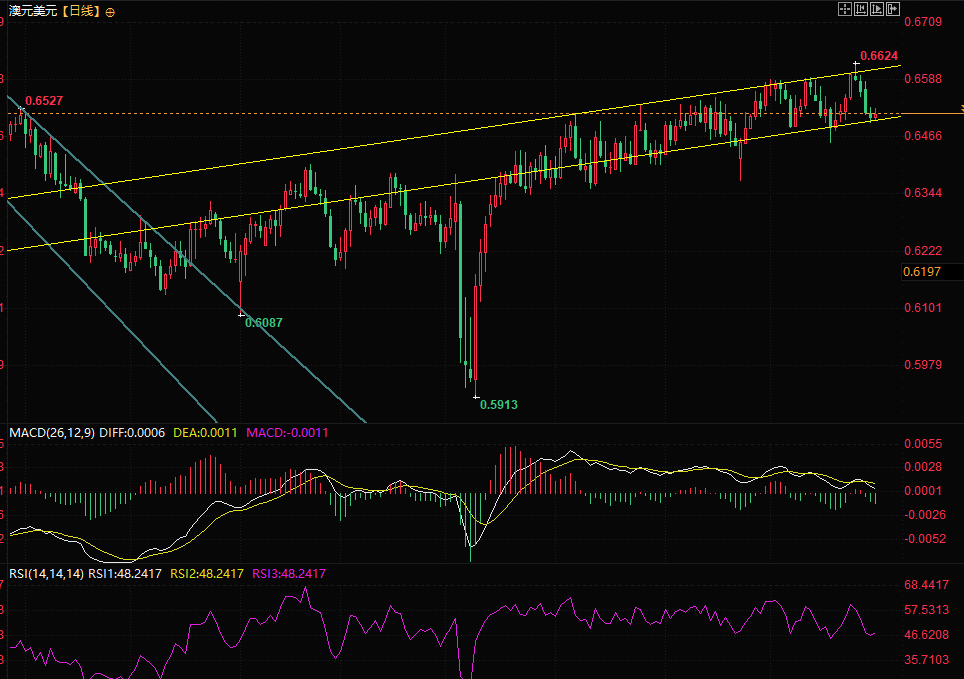CPI was lower than expected but the Australian dollar stabilized and rebounded. What happened?
2025-07-30 11:44:42

Data released by the Australian Bureau of Statistics on Wednesday showed that the closely watched core inflation rate, which excludes extreme volatility, rose 0.6% in the second quarter, lower than the expected 0.7%. On a year-on-year basis, the indicator fell from 2.9% in the first quarter to 2.7%, in line with market expectations.
The market believes that Australia's core inflation rate cooled further in the second quarter, providing stronger evidence for the Reserve Bank of Australia to start monetary policy easing as early as August. Because factors such as government subsidies have suppressed the overall inflation data, making it difficult to truly reflect price pressures in the economy, the Reserve Bank of Australia is more focused on core inflation indicators. This time, the core inflation rate fell further to 2.7%, and entered the 2%-3% target range set by the Reserve Bank of Australia in the first quarter alone, indicating that policymakers can now gradually shift the focus of policy from suppressing inflation to supporting economic growth.
Minutes from the Reserve Bank of Australia's (RBA) latest meeting last Tuesday showed that the board agreed that further rate cuts would be necessary over time, with the timing and extent of easing being the key. Most members believed it would be best to wait until inflation was confirmed to be slowing before easing. Most members believed that three rate cuts in four meetings was not a "prudent and gradual" approach.
Those concerns are real, as the Australian Bureau of Statistics reported that the economy grew 0.2% in the three months to March 2025, down from 0.6% in the final quarter of 2024 and missing expectations for 0.4%.
On the positive side, the annualized growth rate remained at 1.3%, although this was lower than the expected increase of 1.5%.
Labor costs, meanwhile, are a cause for concern, with annual wage inflation rising 3.4% in the year to March and 0.9% in the first quarter of this year.
However, "a small number of members saw that a reduction in the cash rate target was warranted at this meeting. These members placed greater weight on downside risks to the economic outlook, stemming from a possible slowdown in overseas growth and sluggish GDP growth in Australia."
U.S. Treasury Secretary Scott Bessant said the United States and China will continue negotiations on maintaining the tariff truce in two weeks, with Trump making the final decision on whether to extend it. Bessant played down expectations that Trump would refuse to extend it.
China will increase fiscal support to boost domestic consumption and ease growing economic headwinds, Finance Minister Lan Fuan said on Tuesday. He stressed that uncertainty in China's development environment is increasing, and China will adopt a more proactive fiscal policy to help stabilize growth.
It is worth noting that since China and Australia are close trading partners, any changes in the Chinese economy may affect the Australian dollar.
The US dollar index, which measures the greenback against six major currencies, has snapped a four-day winning streak and was trading around 98.80 at press time. The dollar weakened, while the Australian dollar rose. Aussie investors will be closely watching the Federal Reserve's interest rate decision later on Wednesday, which is expected to remain unchanged.
Analysts expect the Fed to keep its benchmark interest rate unchanged at 4.25% to 4.50% in July. According to the CME FedWatch tool, traders are currently pricing in a nearly 97% probability of no change in interest rates at the July meeting.
The United States and the European Union reached a framework trade deal on Sunday that will lift 15% tariffs on most European goods, effective August 1. The agreement ends a months-long standoff, according to Bloomberg.
Federal Reserve Governor Adrienne Kugler said earlier that the Fed should not cut interest rates "for some time" as the impact of the Trump administration's tariffs has begun to be reflected in consumer prices. Kugler added that restrictive monetary policy is essential to control inflationary psychology.
San Francisco Fed President Mary Daly said it was "reasonable" to expect two rate cuts this year, while warning against waiting too long. Federal Reserve Board Governor Christopher Waller believes the Fed should lower its interest rate target at its July meeting.
Technical Analysis
Currently, the Australian dollar is finding support at the 0.6512 mark near the 50-day moving average.
AUD/USD saw slight gains on Wednesday, currently trading around 0.6516. Technical analysis on the daily chart suggests a bullish bias as the pair remains within an ascending channel pattern. However, the 14-day Relative Strength Index (RSI) remains below the 50 mark, suggesting bears are in control. Furthermore, the pair remains below its 10-day moving average, suggesting weak short-term price momentum.
On the upside, AUD/USD may target the initial resistance level of 0.6536, where the 10-day moving average is located. A break above this level may strengthen short-term price momentum and support the pair to test the eight-month high of 0.6624, followed by the upper edge of the ascending channel near 0.6600.
AUD/USD is likely to find major support at 0.6512, the 50-day moving average, and 0.6500, near the lower edge of the ascending channel. A break below this key support area will weaken medium-term price momentum and push the pair towards the monthly low of 0.6454.

(AUD/USD daily chart, source: Yihuitong)
At 11:43 Beijing time, the Australian dollar and US dollar exchange rate is: 0.6516/17.
- Risk Warning and Disclaimer
- The market involves risk, and trading may not be suitable for all investors. This article is for reference only and does not constitute personal investment advice, nor does it take into account certain users’ specific investment objectives, financial situation, or other needs. Any investment decisions made based on this information are at your own risk.





















